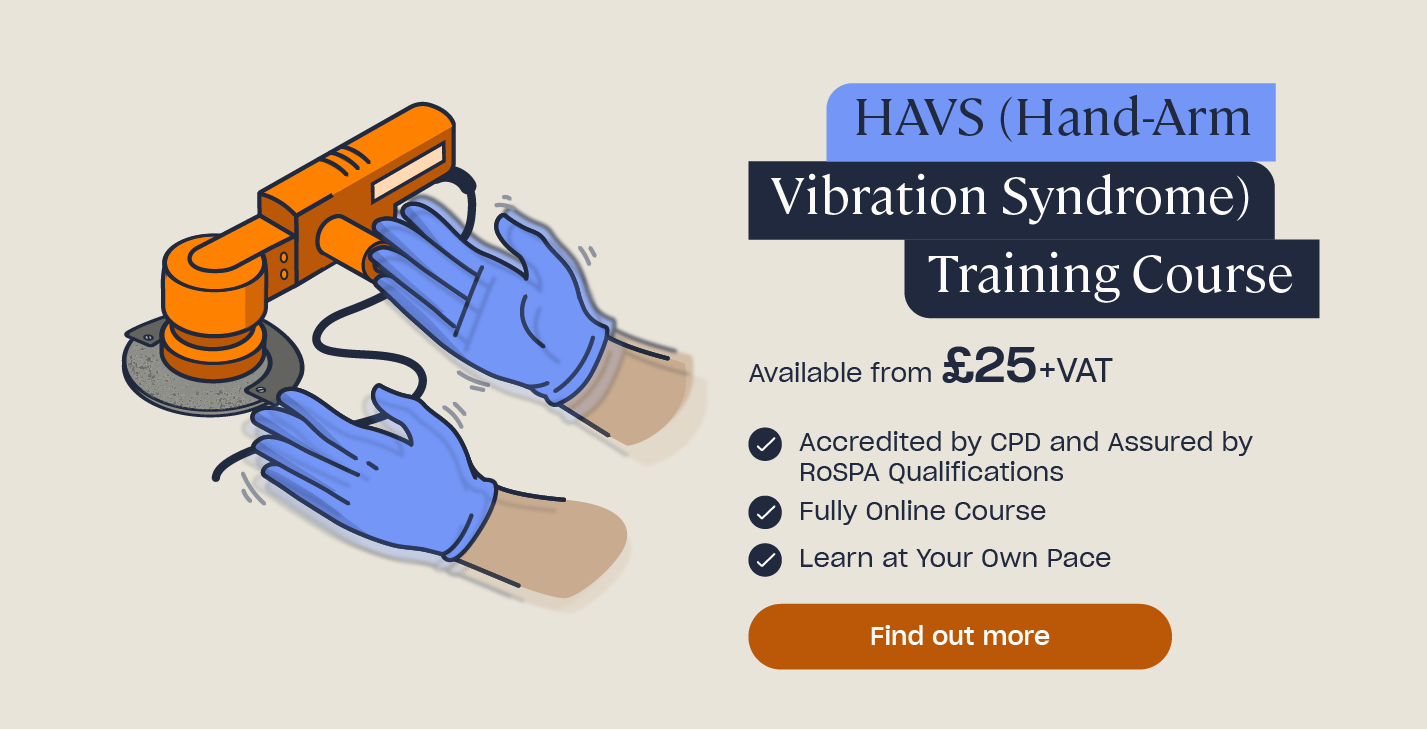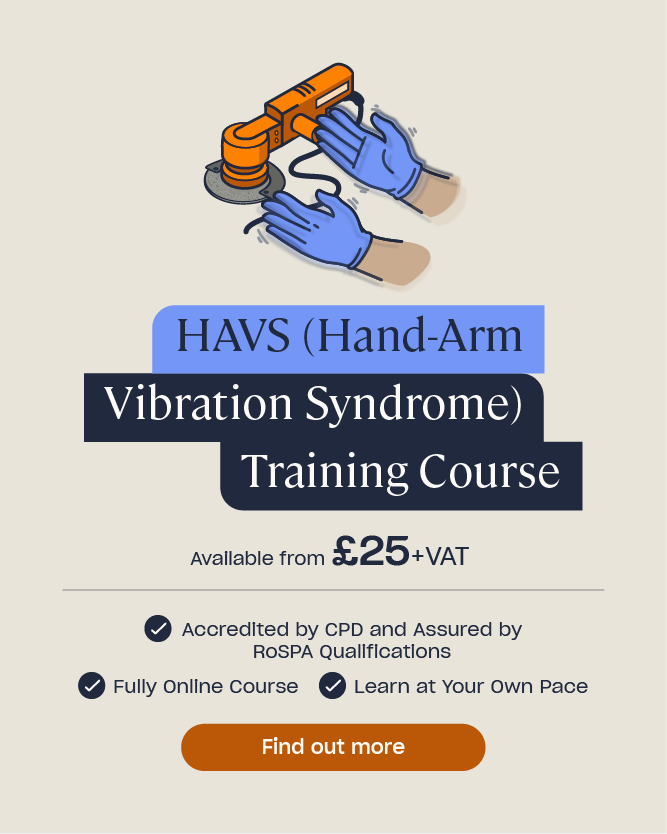Effects of Vibration on the Body: HAVS Guidance
If you regularly use hand-held or hand-guided power tools at work, you could be putting yourself at risk of developing hand-arm vibration syndrome (HAVS). HAVS occurs when the muscles, joints, circulation and nerves in the hands, wrists and arms are damaged due to regular exposure to vibration. This damage is permanent, but it is preventable. Therefore, it’s important that you are aware of the early signs and symptoms, as well as how to control your workplace exposure.
You are at an increased risk of developing HAVS if your work involves the regular use of vibrating power tools. This includes work with:
- Concrete breakers or pokers.
- Sanders.
- Grinders.
- Disk cutters.
- Hammer drills.
- Powered mowers.
- Needle guns.
- Polishers.

Using hammer action tools for more than 15 minutes a day or rotary and other action tools for more than one hour a day, can increase your risk of developing HAVS. Additionally, you are also at risk if you hold powered machinery that vibrates as you use it. Therefore, those at an increased risk of developing HAVS include construction workers, foundry workers, engineers, miners, quarry workers and park maintenance staff.
The Effects of Exposure to Vibration
Regular, prolonged use of vibrating tools (i.e many years) and machinery can lead to debilitating vibration injuries, including:
- Vibration white finger (VWF). VWF develops when regular, prolonged exposure to vibration restricts the blood flow to your hands. When this happens, the tips of your fingers will turn white, they might become cold and you could experience numbness or tingling. Following this your fingers will go blue and then flush deep red and become very painful on recovery. The effects of VWF can begin to appear months or even years after you started using vibrating machinery, and episodes can last between 2 to 30 minutes. Continued use of high-vibration tools could increase the frequency of VWF episodes and might result in more of your fingers being affected.
- Sensory nerve damage. Early signs that you are experiencing sensory nerve damage from vibration include numbness or tingling in one or more of your fingers. This sensation might come and go, and could be mild, but severe cases can lead to permanent numbness. If you do experience severe nerve damage, you might find it difficult to complete fine tasks, such as picking up coins and fastening your buttons.
- Carpal tunnel syndrome. Exposure to vibration might also lead to carpal tunnel syndrome. This is a painful nerve disorder that causes tingling, numbness and weakness in parts of the hand.
- Muscle and joint injuries, including arthritis and tendonitis. These injuries can result in pain, impaired grip force and reduced mobility in the affected areas.
If the symptoms of hand-arm vibration syndrome are ignored, they can become severely disabling. Therefore, it’s important to control your exposure.
Need a Course?
Our HAVS Training Course considers the use of vibrating tools and equipment used in the workplace and how these can cause long-term damage to health if they’re not effectively managed.
Controlling Exposure to Vibration
According to the HSE, around 2 million workers are exposed to vibration levels that pose a definite risk of developing disease. Your risk of developing HAVS depends of several factors which include:
- The level of vibration.
- The length of time you use the equipment for. Even short, irregular exposures to vibrating equipment can be damaging depending on the other factors.
- How tightly you grip the equipment.
- How awkward the equipment is for you to use.
- The conditions where you use the equipment.
Therefore, it’s important to control these factors in order to reduce the risk of developing vibration related diseases.

To control your exposure, you should:
- Ensure you are properly trained on how to use your tools and equipment correctly. Everyone should understand the measures their workplace should have in place to reduce vibration levels and the risk of HAVS.
- Properly look after and maintain your tools in accordance with your training. Poorly maintained tools can lead to increased vibration from general wear and faults.
- Ensure you understand which activities provide unusually high levels of vibration.
- Wear task-appropriate PPE such as standard safety gloves. Safety gloves will aid circulation by keeping your hands warm, and will reduce some of the impact from equipment vibration. You might also consider using heat pads if working in cold conditions.
- Use tools and equipment with lower levels of vibration.
- Select the right tools and equipment for the job.
- Alter the processes and procedures you use to minimise your exposure to vibration.
- Ensure you do not grip vibrating tools or equipment too tightly.
- Keep warm and dry and massage your fingers on work breaks to improve your blood circulation.
- Adhere to any task rotation systems and time limits your employer has enforced.
Regular and prolonged exposure to vibration can result in very painful diseases. Therefore, it’s important that you understand the symptoms of HAVS and methods you can use to control your exposure to dangerous levels of vibration. Use the information outlined in this article to ensure you are carrying out your workplace activities safely. If you do notice any symptoms of HAVS, it’s important that you report them promptly to your employer and health adviser.
What to Read Next:
- Refusal to Wear PPE: Guidance for Employers
- RIDDOR: How to Report an Incident or Accident at Work?
- Hand-Arm Vibration Syndrome (HAVS) Training









